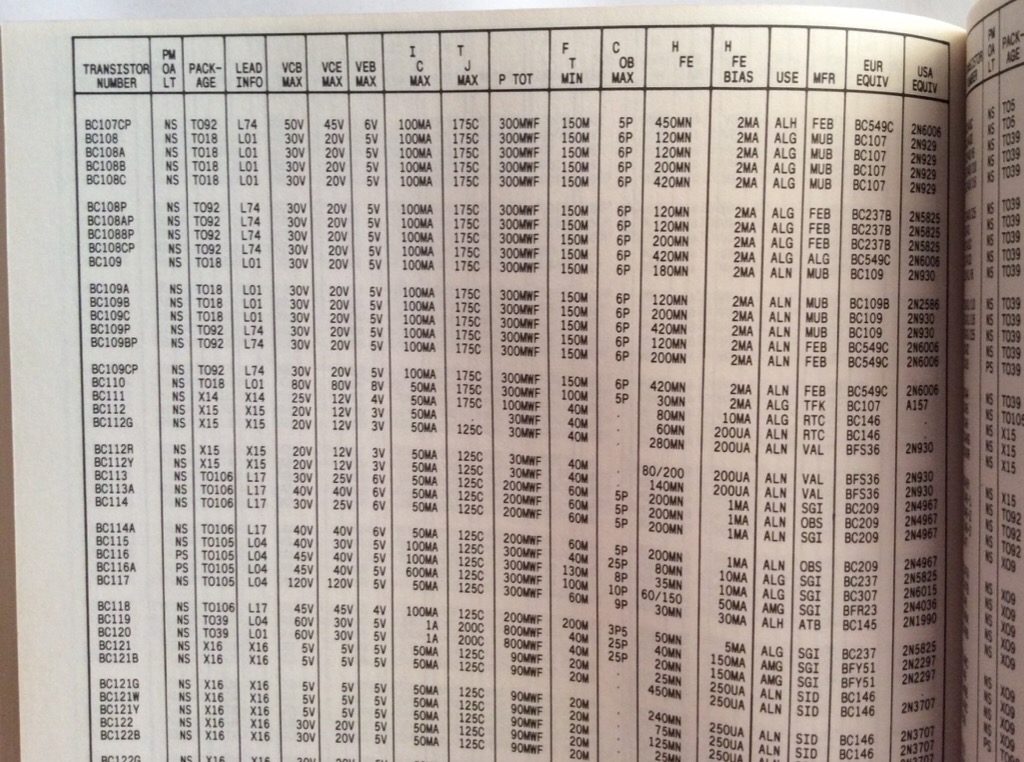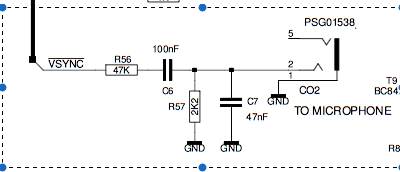Page 2 of 8
Re: MIC amplifier
Posted: Thu May 05, 2016 4:44 pm
by Moggy
No as it powers headphones that is more of a current amplifying device. I have used devices like this shown below for line level voltage amplification, for your use I would include a mid range potentiometer on the front end as well. you may also need to play around with the two resistors used in the feed -back loop so as to obtain a good clean signal of correct gain, in the format shown the input resistor value is fairly low as it is used in this example to work with the low milliwatt out-put from a standard microphone. Swapping this for a higher value means the main feed-back resistor has to increase proportionally to obtain the same gain.
http://cpc.farnell.com/1/1/53102-vellem ... p-kit.html
Re: MIC amplifier
Posted: Thu May 05, 2016 5:33 pm
by 1024MAK
It appears the design changed, as there are some different pictures of this kit.
There are other suppliers:-
Quasar electronics (PDF available to look at)
Plus others...
Mark
Re: MIC amplifier
Posted: Thu May 05, 2016 5:49 pm
by Moggy
1024MAK wrote:It appears the design changed, as there are some different pictures of this kit.
There are other suppliers:-
Quasar electronics (PDF available to look at)
Plus others...
Mark
Quasar is where I normally buy from.
The Quaser pictured board is a P1803'2 (discontinued by Vellemem I believe) which uses an LM358 dual op-amp wired in mono as opposed to the 741 used in the K1803 so not the same thing, but this is all not really important as the K1803 you get from Quasar is the one I first posted and the PDF schematic reflects this so can only assume the P1803'2 was sent out to get rid of stock of a discontinued product hence the picture or in place of out of stock K1803s or even pictured in error.
Although they are nice kits I do tend to find they are a bit "one-dab-with-the-iron" when soldering and do not like a lot of reworking(track-pad lifting etc) but are well worth the brass when compared to the cost of own design, etching, component buying etc.

Re: MIC amplifier
Posted: Sun May 08, 2016 5:56 pm
by mahjongg
you can try implementing the mic pre-amplifier I've built into my ZX81 clone, which is working well.

i have put a lot of effort in designing it, and now it works very well!
Re: MIC amplifier
Posted: Sun May 08, 2016 6:41 pm
by mrtinb
mahjongg wrote:you can try implementing the mic pre-amplifier I've built into my ZX81 clone, which is working well.
So the ZX81 connected to the left, and the tape to the right?
Re: MIC amplifier
Posted: Sun May 08, 2016 6:50 pm
by 1024MAK
mrtinb wrote:mahjongg wrote:you can try implementing the mic pre-amplifier I've built into my ZX81 clone, which is working well.
So the ZX81 connected to the left, and the tape to the right?
Err, I think there may be some crossed wires here

Martin is wanting to amplify the tape output signal from the ZX81.
The diagram that mahjongg posted is to amplify the input in to the computer.
Mark
Re: MIC amplifier
Posted: Fri May 13, 2016 12:47 pm
by mrtinb
Hi

I'm trying to learn about transistors.
Is there any map on the Internet which lists differences between these transistors (so I can see which might be replaced by others), so I would not have to read every single datasheet and make the mapping myself?
BC107 BC108 BC109
BC546 BC547 BC548
BC549 BC550 BC556
BC557 BC558 BC559
BC560 (and the whole 2N2222 family)
Re: MIC amplifier
Posted: Fri May 13, 2016 1:00 pm
by PokeMon
Well - you can use a parametric search from your desired parameters by any distributor like Mouser or Farnell for example:
http://www.mouser.de/Semiconductors/Dis ... _/N-ax1sh/
Normally the transistors used are general purpose transistors and normally needed to be classified as NPN or PNP transistor (most important), voltage range, frequency response/bandwith, case and pin out and amplification. Last one most are sorted as A/B/C types while C has higher amplification as standard A. There may exist kind of compatibility tables but I prefer to use parametric search or use standard transistors like
BC547/BC847 as NPN
or BC557/BC857 as PNP (not sure if BC857 exists, but I guess).
Re: MIC amplifier
Posted: Fri May 13, 2016 8:33 pm
by 1024MAK
I use this book:- Tower's International Transistor Selector
Amazon UK
Amazon USA
I have this edition: revised edition update three, 1984.
- image.jpeg
- Front cover
- (239.33 KiB) Downloaded 287 times

- Inside
- image.jpeg (266.34 KiB) Viewed 2966 times
Mark
Re: MIC amplifier
Posted: Wed May 18, 2016 12:41 am
by mahjongg
1024MAK wrote:mrtinb wrote:mahjongg wrote:you can try implementing the mic pre-amplifier I've built into my ZX81 clone, which is working well.
So the ZX81 connected to the left, and the tape to the right?
Err, I think there may be some crossed wires here

Martin is wanting to amplify the tape output signal from the ZX81.
The diagram that mahjongg posted is to amplify the input in to the computer.
Mark
yes, indeed, if you want a louder ZX81 output signal, I would simply change R27 to something a bit more than 1K, No transistors needed! The ZX81 attenuates its mic signal by about a factor 1000 (1Meg versus 1K) so its output is very small, (about 5mV) so as to not overload the very sensitive microphone inputs of tape recorders, but a bit more signal should be better nowadays. my own cassette output circuit looks like this:

- cassette output.png (16.87 KiB) Viewed 2948 times
it outputs a few hundred millivolts.